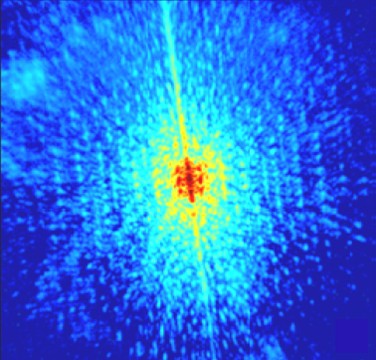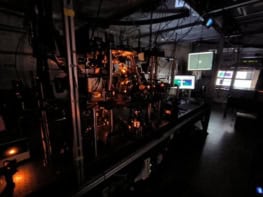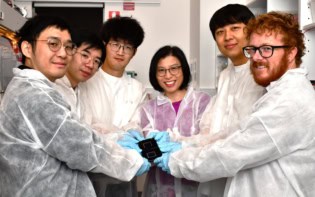The nanoscale X-ray imaging of biological samples could soon be routine in any lab thanks to a breakthrough by physicists in the US. The team has shown that lensless X-ray microscopes do not necessarily need large accelerator-based X-ray sources. Instead, a technique called high-harmonic generation can be used to make smaller “tabletop” X-ray microscopes based on a compact infrared laser (Phys. Rev. Lett. 99 098103 ).

microscope
X-rays are desirable for microscopy because their short wavelength enables high-resolution images, but unlike electron microscopes they can be used on thick samples. Unfortunately lenses for X-rays are tricky to make, and as a result there has been a lot of research into creating lensless microscopes, which use a computer algorithm to generate images from a sample’s diffraction patterns. However, these microscopes rely on coherent X-rays, which normally are only obtainable from large accelerator facilities such as free-electron lasers.
Now Henry Kapteyn, Margaret Murnane and others from the University of Colorado, together with colleagues from the University of California in Los Angeles and Lawrence Berkeley National Laboratory, have shown that lensless X-ray imaging can be done in the lab using a process called high-harmonic generation. This makes use of a compact source that can produce coherent light, but with a longer wavelength than the desired X-rays. The light is shone into a gas-filled tube where atoms absorb bunches of photons, and then spit out single X-ray photons with a much shorter wavelength.
The group used an infrared laser with a wavelength of 780 nm as the light source, and after high-harmonic generation ended up with a coherent X-ray source with a wavelength of 29 nm. They found that these “soft” X-rays could image objects with a resolution of 214 nm. This is not quite as fine as the 62 nm resolution recently demonstrated at the large FLASH free-electron laser in Hamburg, Germany, but that fact that the imaging can be performed in any lab could make lensless X-ray microscopy feasible for many researchers. Richard Sandberg, one of the researchers, told physicsworld.com that his group are currently improving their device to have a higher spatial resolution.




